Wonderful adaptations of the Arctic fox: how it thrives in extreme conditions
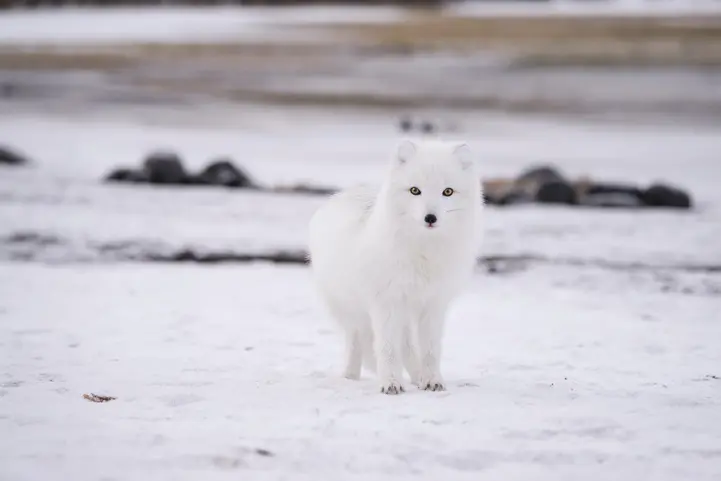
The Arctic fox is considered one of the animals that survives in the harshest harshest conditions on Earth. In the icy polar environment, the polar fox bravages extreme weather conditions and freezing cold to thrive surprisingly. This animal has wonderful adaptations that help it survive and reproduce in this harsh environment. So how does the Arctic fox manage to bloom in very difficult conditions? This is what we will cover in this article.
Show key points
- The Arctic fox has evolved remarkable physical adaptations, such as dense fur and a flexible body, that help it endure and thrive in extremely cold polar environments.
- Its thick, bushy tail assists with balance and movement on slippery ice, while also providing additional warmth when wrapped around the body.
- Small, rounded ears and sharp senses of hearing and smell allow the Arctic fox to detect prey and avoid predators even under layers of snow.
- ADVERTISEMENT
- The species follows a cooperative social system where both parents actively participate in raising and protecting their young, ensuring better survival rates.
- As a skilled hunter, the Arctic fox uses stealth, camouflage, and its acute senses to track prey and survive on limited food sources in hostile conditions.
- Unique movement patterns and strong claws enable the fox to traverse icy terrain effectively without slipping or sinking.
- Reproduction in polar environments poses several challenges, which the Arctic fox overcomes through strategic nesting, careful mate selection, and dedicated parental care.
Supernatural body adaptations of the Arctic fox
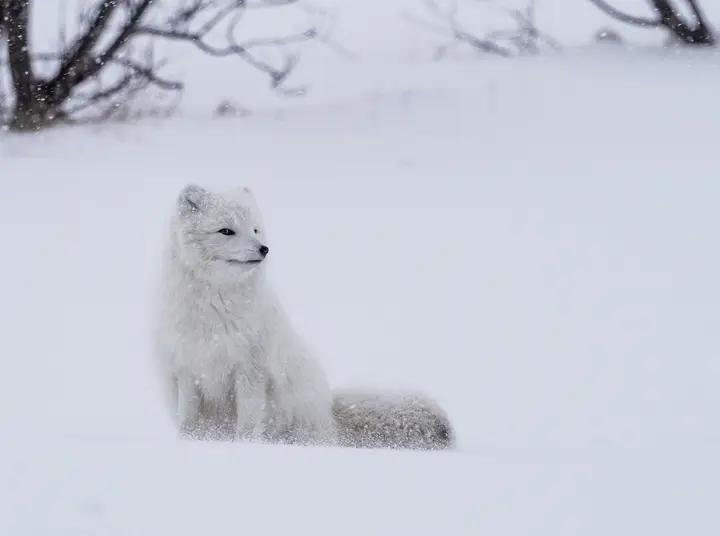
The Arctic fox possesses exceptional bodily adaptations that enable it to survive and thrive in the harsh conditions of the Arctic. Unique methods of adaptation in the body of the polar fox are one of the secrets of its success in the icy polar environment. The body of the polar fox is characterized by a set of wonderful adaptations that give it a tremendous amount of flexibility and the ability to adapt to the conditions of the ecological environment.
Recommend
One of the notable physical adaptations of the polar fox is its dense and insulating fur. The polar fox has a thick layer of fur that helps preserve heat and protect against extreme cold. This dense fur provides the fox with natural insulation and maintains its proper body temperature even in the harshest icy conditions.
In addition to its dense fur, the polar fox's body is characterized by its long and thick tail, which is an important tool for its balance and navigation in the ice. The fox uses its tail as a goat for balance and to aid graceful movement on falling snow or slippery ice surfaces. This strong and flexible tail helps the fox maintain stability while hunting or navigating its harsh icy environment.
Moreover, the polar fox has small, round ears that give it a tremendous amount of sensuality and vocal guidance. These round ears are an effective tool for the polar fox in detecting and identifying the source of sound, enabling it to locate potential prey or avoid dangers. This prominent sensory adaptation is part of the polar fox's survival and hunting strategy in the polar environment.
Moreover, the polar fox has an exceptionally flexible body that allows it to bend and rush on snow and ice. The fox has flexible bones that enable it to move and navigate easily in difficult conditions. This amazing structural adaptation makes the polar fox able to make the most of the icy environment and move easily and quickly.
The Arctic fox turns out to have miraculous bodily adaptations that enable it to thrive in very harsh conditions. With its dense fur, thick tail, round ears and flexible body structure, the polar fox survives in its icy polar environment and tackles environmental challenges efficiently and brilliantly. These remarkable adaptations of the polar fox reveal the animals' ability to adapt to harsh environmental environment conditions and inspire us to explore more of the mysteries of the world of life and enlighten us in developing adaptation and sustainability strategies.
Family care: a unique social system for the Arctic fox
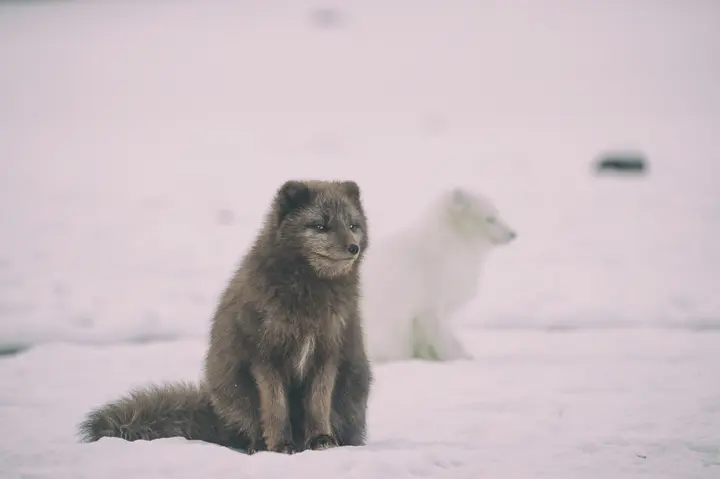
The Arctic fox is one of the most open to social ties and supportive of the concept of family. In the harsh ice environment, polar foxes face many challenges in survival, relying on a unique social system that helps them meet their needs and protect their young.
The family system of the Arctic fox consists of the father, mother and their young young. Father and mother cooperate in the care and upbringing of the little ones, forming a strong and interconnected unit. The two foxes are involved in building and providing shelter for the young, where they dig tunnels in heavy snow to provide protection from harsh weather elements and predators. The father and mother provide food for their young, where they hunt jointly and share prey.
In addition, the Arctic fox has a unique social system that allows it to interact with the rest of the community. They form small groups that are usually an extended family consisting of different generations. Members of the group exchange information and cooperate in hunting prey and defending common land and food resources. This social system promotes cooperation and solidarity among polar foxes and contributes to increasing the chances of survival and prosperity in extreme conditions.
In short, the Arctic fox's family and meeting system is unique and sophisticated, fostering cooperation and solidarity among them and helping to protect the young and provide for their basic needs. This social system represents one of the arctic fox's remarkable adaptations in the harsh environment and reflects their strong desire to build a strong family unit to face extreme challenges and thrive in difficult conditions.
Foraging strategies in polar ice
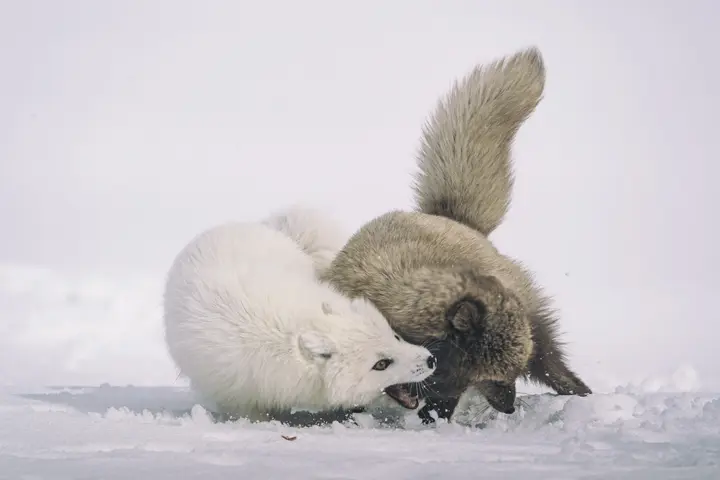
In a world of frozen ice and white snow, the Arctic fox lives and faces great challenges in finding food. Foraging strategies in polar ice rely on the polar fox's unique abilities, as it uses its senses and hunting skills to secure its daily meals. The polar fox is a skilled and persistent examiner, who can face difficult environmental challenges and succeed in harsh environments.
The way the arctic fox moves is a crucial role in finding food. Thanks to its ability to walk on freezing water and heavy snow, the polar fox is able to reach remote and hard-to-reach areas where prey can be available. The polar fox also uses ice as a hunting haven, where it can wait near holes in the ice to chase its prey.
In addition, the polar fox has a sharp sense of smell that helps it spot prey under ice fish. The polar fox uses this sense to sense the presence of fish and other aquatic bunkers under the ice, giving it an excellent opportunity for successful hunting.
In addition, the polar fox exploits ice to camouflage and hide while hunting. When spotting potential prey, the polar fox approaches quietly and slowly on the ice, making it unnoticeable and boosting its chances of successful hunting. After a cautious approach, the polar fox jumps vigorously and dexterously to attack and capture its prey.
Without a doubt, the Arctic fox is an outstanding example of natural ingenuity in surviving and thriving in difficult conditions. Elaborate hunting tactics and clever exploitation of available resources make it a superior animal in polar ice. By understanding the polar fox's foraging strategies, we can gain a deeper insight into the adaptation methods used by organisms in similarly harsh environments and draw inspiration from them in developing our own strategies for coping with climate change.
Unique adaptations help the polar fox navigate the ice
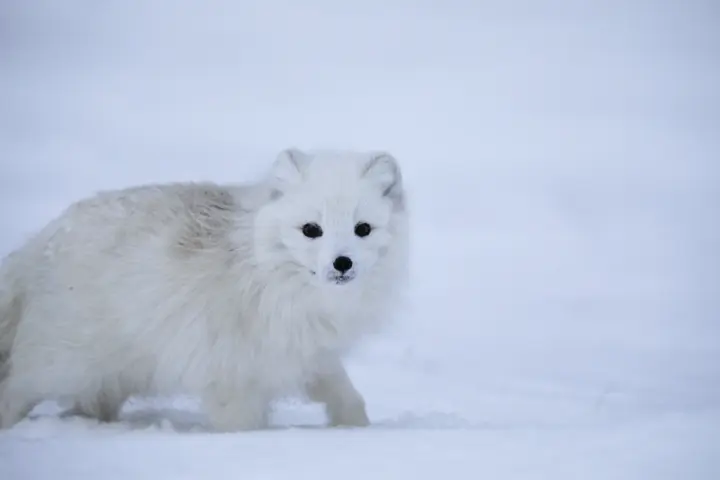
The arctic fox possesses exceptional adaptations that help it navigate easily and skillfully in the harsh icy environment. Ice and snow are present year-round in the polar fox environment, so navigating this environment is one of its most important challenges. However, the polar fox has unique and surprising adaptations that enable it to navigate effectively and at full speed as it transcends icy terrain.
First, the polar fox has long and durable claws. These claws provide a firm grip for the fox on skiing ice and heavy snow. This nail-like organ has turned into a powerful tool that helps the fox keep its balance and prevent it from slipping during movement.
Second, they have an exceptional ability to adapt to the icy environment through the way they walk. The polar fox moves distinctively by simultaneously lifting and dropping its hind feet, allowing it to move easily on icy and snowy ground without slipping or sinking into it. This harmonious pattern of movement allows the fox to move in a coordinated and rapid environment in a harsh environment.
Thirdly, the polar fox has a thick layer of insulating fur. The fur has small hairs that contain air, which helps form an insulating layer that prevents heat from leaking from the fox's body and maintains its internal temperature. This dense fur helps the fox to endure cold and face the bitter cold without being affected by his health or mobility.
In short, the polar fox's unique adaptations enable it to navigate easily in ice and snow. His durable claws and harmonious walking style ensure his stability and speed of movement. In addition, the dense layer of fur protects it from extreme cold and helps it stay warm in this harsh icy environment. The magnificent adaptations of the polar fox reflect its ability to live in harsh conditions and make it one of the most unique creatures in the polar world.
Exceptional sensory adaptations enable the polar fox to hunt successfully
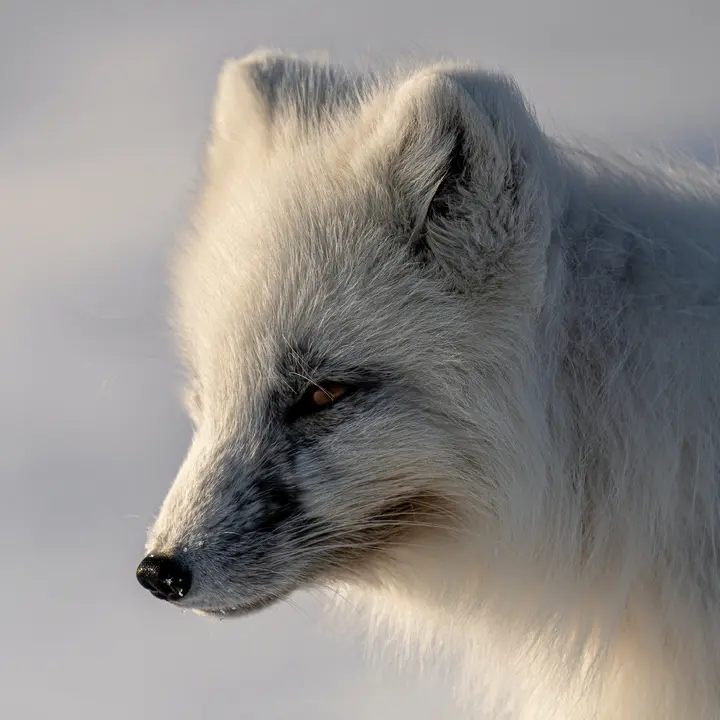
The Arctic fox has exceptional sensory adaptations that enable it to successfully hunt in its harsh environment. Despite the bitter cold and heavy snow, the polar fox has sharp senses that help it detect its prey and deal with extreme weather conditions.
One of his most notable sensory adaptations is his striking eyesight, as he has large, rounded eyes that make him see clearly in the light of the frozen landscape. The polar fox benefits from the purity of the polar air and the low density of the air, which helps it see prey kilometers away.
In addition to its striking eyesight, the polar fox has an acute sense of smell. He uses his sense of smell to detect his potential prey in the paved snow area, where he can detect the smell of animals under snow and ice. The polar fox also uses the sense of smell to recognize signs of compound signs by other foxes, helping it identify its territory and compete for resources.
Moreover, the polar fox has a sharp sense of hearing that helps it detect sounds beneath the surface of snow, such as the movement of prey or other foxes. The polar fox monitors and analyzes sounds to locate potential prey or potential hazards in the area around it.
Thanks to these exceptional sensory adaptations, the Arctic fox can withstand its harsh environment and successfully hunt to meet its nutritional needs. The polar fox's symbiosis with these harsh conditions and its superiority in hunting is a great example of how organisms adapt and exploit their sensory potential to survive and thrive in the most difficult natural conditions.
Reproduction in polar ice: challenges and strategies
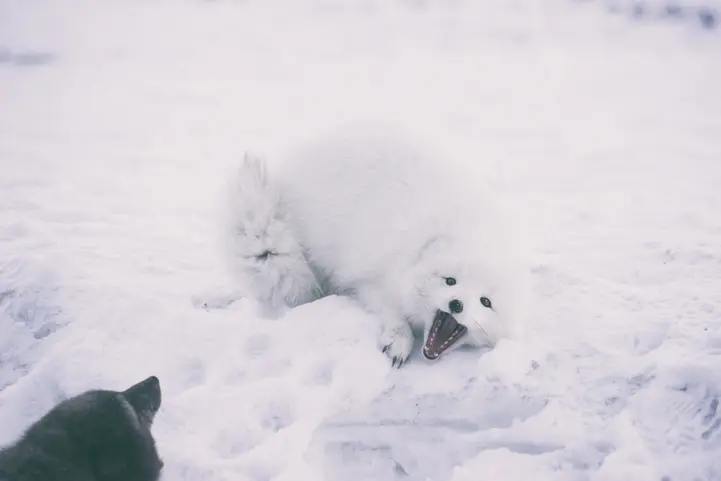
When it comes to breeding in the polar ice environment, the Arctic fox faces significant challenges. Hard ice and extreme cold are complex things that must be overcome to ensure the survival of future generations of polar foxes.
One of the main challenges that the polar fox faces in breeding is choosing a starting point that is safe and suitable for raising the young. The polar fox is looking for a place that provides isolation and protection from strong storms and predators. It is preferable that the chosen place be away from places where young people may be at risk, such as cracks in the ice or areas where water is drowning.
In addition, polar foxes face the challenge of finding a suitable mate for mating. Due to extreme environmental conditions, the temporary presence of suitable individuals is rare. Therefore, when polar foxes join at the breeding site encounter, they invest a lot of time and effort in ascertaining compatibility and the right chance for mating.
After marriage, the female faces another challenge: choosing a place to build the nest. Female polar foxes build a nest on thick ice to protect the young from cold and predators. This requires considerable efforts in digging a hole in the ice and lining it with fox's fur to provide thermal insulation.
When a female gives birth, she faces other challenges in caring for and raising her young. The female stays with the young to cover their heat and provide food. Searching for food in polar ice is difficult, and requires a lot of time and effort to find suitable prey to feed the young.
In general, it can be said that the process of reproduction in polar ice requires tight strategies and carries unique challenges. Arctic foxes must innovate and adapt to overcome the odds and secure the future of future generations.
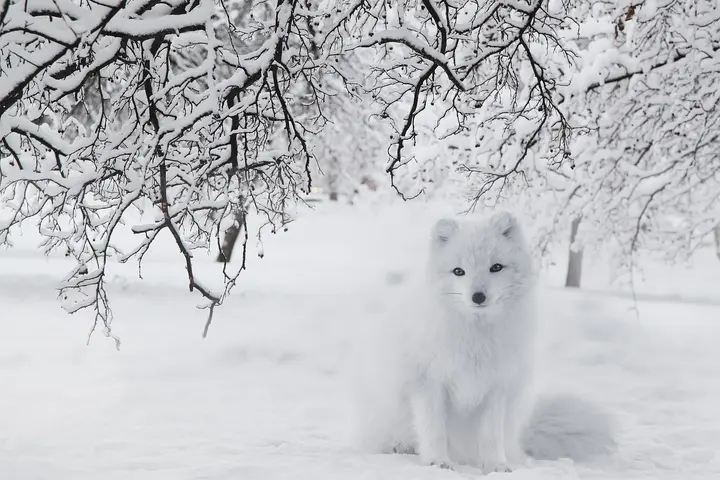
Our knowledge of the wonderful adaptations of the Arctic fox is growing day by day, and thanks to its exceptional physical and behavioral abilities, the polar fox is able to live and thrive in a very harsh environment. This animal is a vivid example of the ability of living organisms to adapt to conditions of survival in extreme weather conditions. By studying the adaptations of Arctic foxes, we can gain a better understanding of how organisms survive in exceptional circumstances, and perhaps be inspired by them in developing adaptive technologies and strategies that help us cope with global climate change.








